Could the Ancient People Carry Swords When Going Out? – Correct Carrying Method (Part 2)

“The sword is the king of all weapons.” In the eyes of the ancients, the sword was not only a practical and portable weapon but also a symbolic ritual object with the connotation of “a gentleman.” According to The Book of Sui – Records of Etiquette (《隋书·礼仪志》), “For the first – rank officials, they had swords with jade fittings and wore dark – blue jade; for the second – rank, swords with gold – mounted fittings and wore pale – blue jade. For third – rank officials, as well as some titled nobles, even those of the fourth and fifth ranks, they had swords with silver – mounted fittings and wore pale – blue jade. Officials from the rank of shizhong (侍中) down to tong zhi lang (通直郎), when attending ceremonies, carried imitation swords. Those with real swords had to take them off when entering ancestral temples, ascending halls, or being in the imperial guard area. First – rank officials, as well as some dukes, marquises, and earls, wore two swords. Second – and third – rank officials, along with some titled nobles, wore only one sword. The same rule applied to the sword – belts.” Evidently, in ancient society, the sword was a symbol of important ritual objects and gradually became the most highly regarded short – weapon among the ancients. When the ancients went out and chose to carry weapons, the sword was their first choice.
The assassination attempt of King of Qin by Jing Ke was made possible because the loose robes and large sleeves of the Hanfu could hide a dagger. However, aside from concealing a sword in the sleeves for the purpose of assassination, what other ways were there to carry a sword around?
Ⅰ. Hanging Method
Firstly, there was the hanging method. They would thread a rope through the sword and tie it around the waist. This was a relatively primitive way and was popular in the early days. The custom of carrying swords in this way originated from the practice of northern nomadic tribes, who wore short swords around their waists for cutting grass and meat. According to archaeological discoveries, in an early Western Zhou tomb in Zhangjiapo (张家坡), Chang’an (now Xian), Shaanxi Province, there was a body with a bronze sword placed on the right side of the waist.
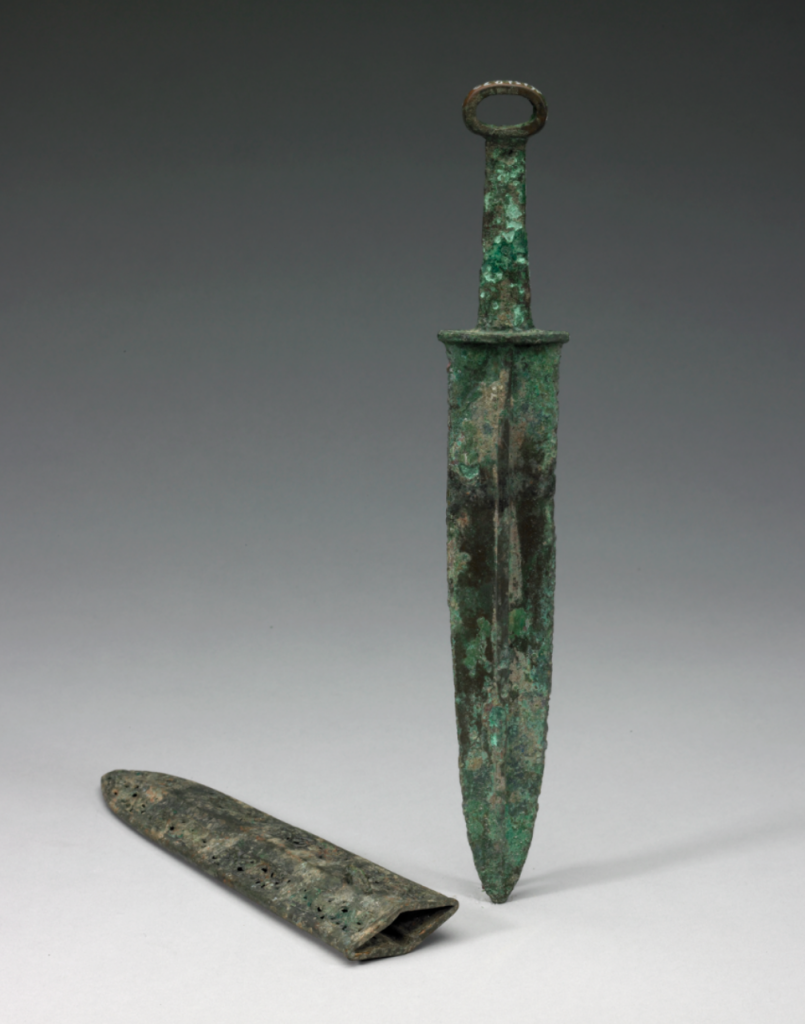
Since this sword had no scabbard but had a ring at the hilt, it was clear evidence of a sword carried by threading a rope around the waist. In the vast areas north of the Yellow River in China, this type of short sword was quite common until the Western Han Dynasty. You can still see actual specimens in museums of all sizes today. However, with the rapid development of the Central Plains civilization, the actual length of swords kept increasing. When walking, the sword swayed back and forth around the waist with the hanging method, which was really indecent for the nobles in the Central Plains. As a result, this way of carrying swords gradually became less common.
Ⅱ. Zhi – style Sword – wearing Method
Secondly, there was the zhi – style sword – wearing method ( a Warring States-era method using sliding fixtures on the scabbard for belt attachment). This method was designed to prevent the sword body from swinging back and forth while walking. The sword was fixed with a knob and passed through the belt, so that the sword body was close to the side of the waist, ensuring the wearer’s elegance. Since the “zhi” (璏, the part used to attach the sword to the belt) was exposed on hanfu clothing, patterns could be carved on it to show the wearer’s status and aesthetic taste. Patterns like the cloud – thunder pattern, the chi – dragon pattern, the animal – face pattern, and the nipple – nail pattern each had their own charm.
Moreover, “zhi” were mainly made of jade or bronze. The jade – made ones were especially noble, and jade sword – fittings became the material that nobles vied to choose. By the Han Dynasty, there even emerged the “four set” of “jade for the sword”, which included the jade hilt – end, the jade guard, the jade “zhi”, and the jade pommel. As the saying goes, “A beauty is as gentle as jade, and a sword is as dazzling as a rainbow.” Once a person had such a weapon set that was “perfect from head to toe”, it was like having a gentle beauty by their side. What more could a gentleman ask for?
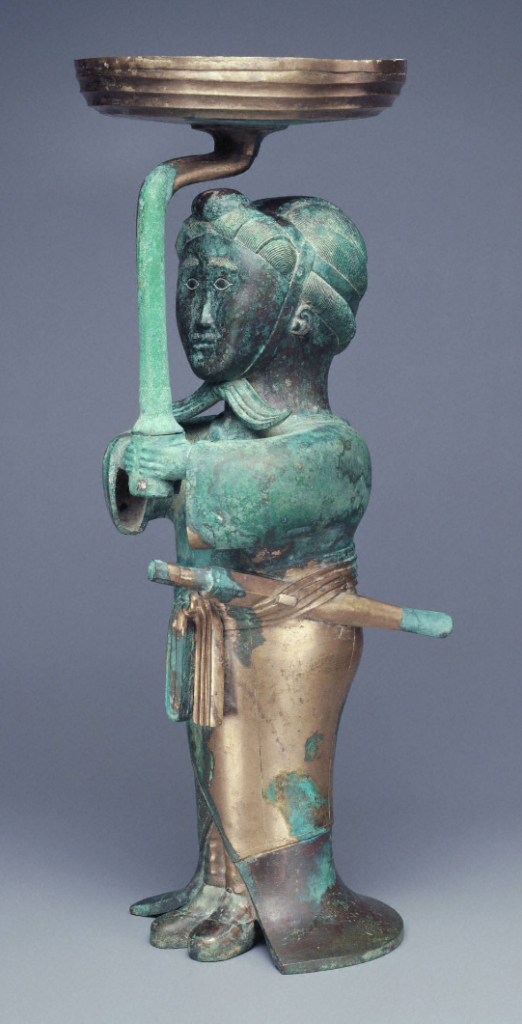
Of course, this way of wearing a sword had quite obvious drawbacks. Emperor Qin Shi Huang used this seemingly “cool” way of sword – wearing in daily life. But when he was actually faced with an assassination attempt by Jing Ke, it was really embarrassing. The “zhi” fixed the sword too firmly. Moreover, after Qin Shi Huang ascended the throne as the King of Qin, he mainly wore the sword to maintain his image and had no need to practice drawing it. As a result, it was extremely difficult for him to draw the long sword. He could only run around the pillar in a panic. Finally, he managed to slide the jade sword locket to the back of his waist, allowing him to draw the sword behind his back and turn the tables on the attacker.
Ⅲ. Double – scabbard – ear Sword – wearing Method
Thirdly, there was the double – scabbard – ear sword – wearing method. There were two pierced scabbard ears on the sword scabbard. A belt could pass through them, and the other side was tied to the waist, allowing the sword to be worn horizontally. This method mainly emerged in the late Northern and Southern Dynasties. According to research, this way first appeared in the Sasanian Persia at that time and gradually spread to China. By the Tang Dynasty, it was widely adopted by sword – wearers. Compared with the zhi – style sword – wearing method, this one was more suitable for riders to draw their swords. Also, the sword wouldn’t shift around during intense movement, making it more practical and flexible in use. Later, this sword – wearing method was introduced from China to Japan by the Japanese envoys to the Tang Dynasty. Among the precious weapons stored in the Shosoin Repository, there are quite a few sword scabbards with double scabbard ears.
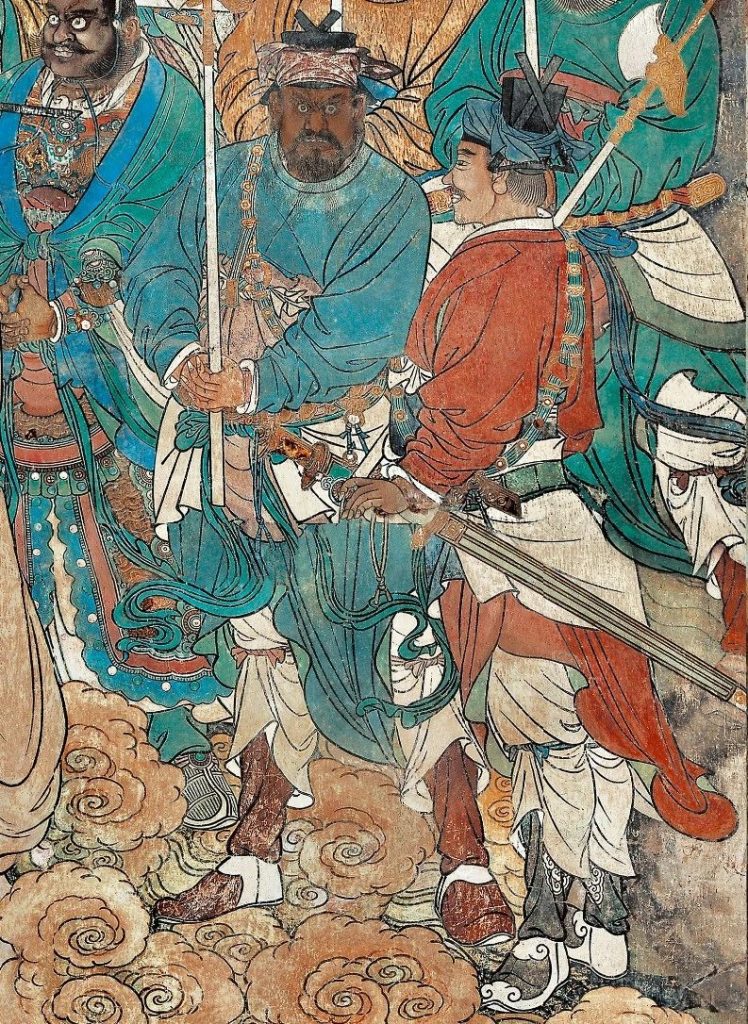
Ⅳ. Shoulder – hung Sword – belt Method
Fourthly, there is the shoulder – hung sword – belt method, also known as the diagonal – cross sword – wearing method. With this method, the sword is placed inside a sword – belt and carried on the shoulder. There is also a derivative way where one leather belt and one waist – belt are used to place the sword or other bladed weapons around the waist. These two ways are more commonly seen with knives. This sword – wearing method first became popular in Yunnan region of China. This design suits the warm climate and light clothing in Yunnan. Using the sword – belt to carry the sword allows for a relative separation between the person and the sword. That is, the sword can be easily taken off and used at any time, which is much more convenient.
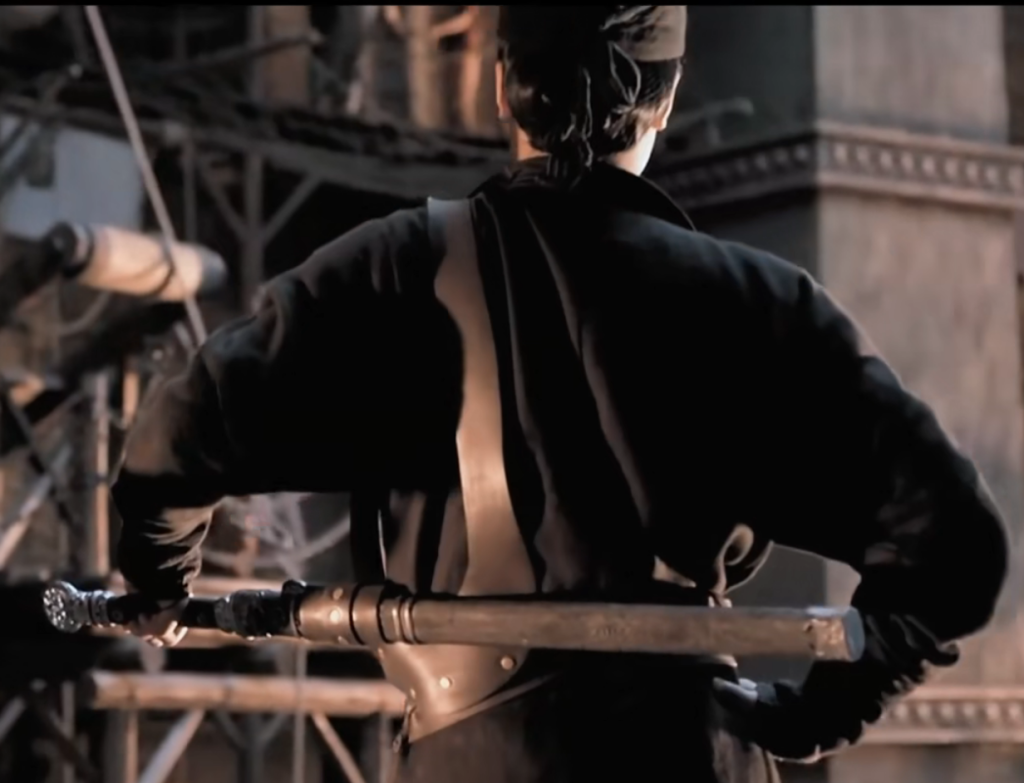
Ⅴ. Hand – holding Method
Besides, in some martial arts works, for easier sword – drawing, swordsmen may choose to hold the sword directly in their hands. This way, they can draw their swords more calmly when facing enemies. Jin Yong’s The Smiling, Proud Wanderer highly exalts the sword. There are the most masters in this novel who use and hold swords while roaming the martial – arts world. Most of the people from the Five Mountains Sword Sects walk around with a sword in hand. Or when they rest, they place the sword beside them instead of carrying it on the back or tying it to the waist, so that they can draw the sword to face enemies at any time and give vent to their feelings of justice. Even those who don’t hold a sword are mostly well – versed in swordsmanship.
Summary
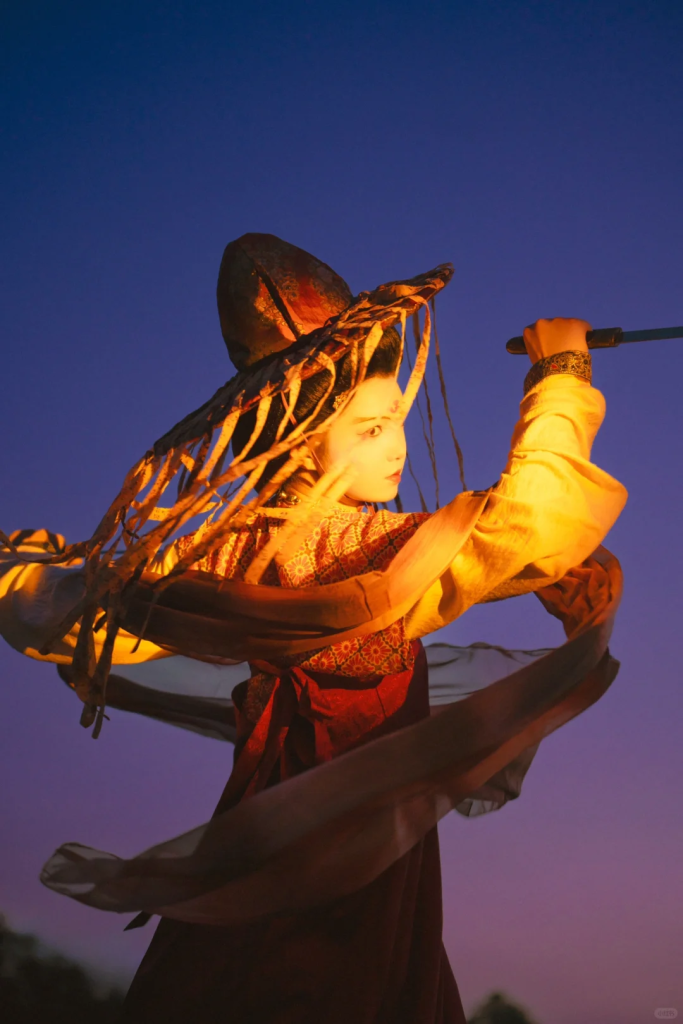
In ancient times when long weapons were inconvenient to carry, having a sword or a knife by one’s side was not only a symbol of status and rank but also a necessity for self – defense against enemies. Carrying a beautiful sword or knife could highlight the owner’s nobility. However, the choice of how to wear it varied from person to person, mainly influenced by the trend of the time and personal needs.
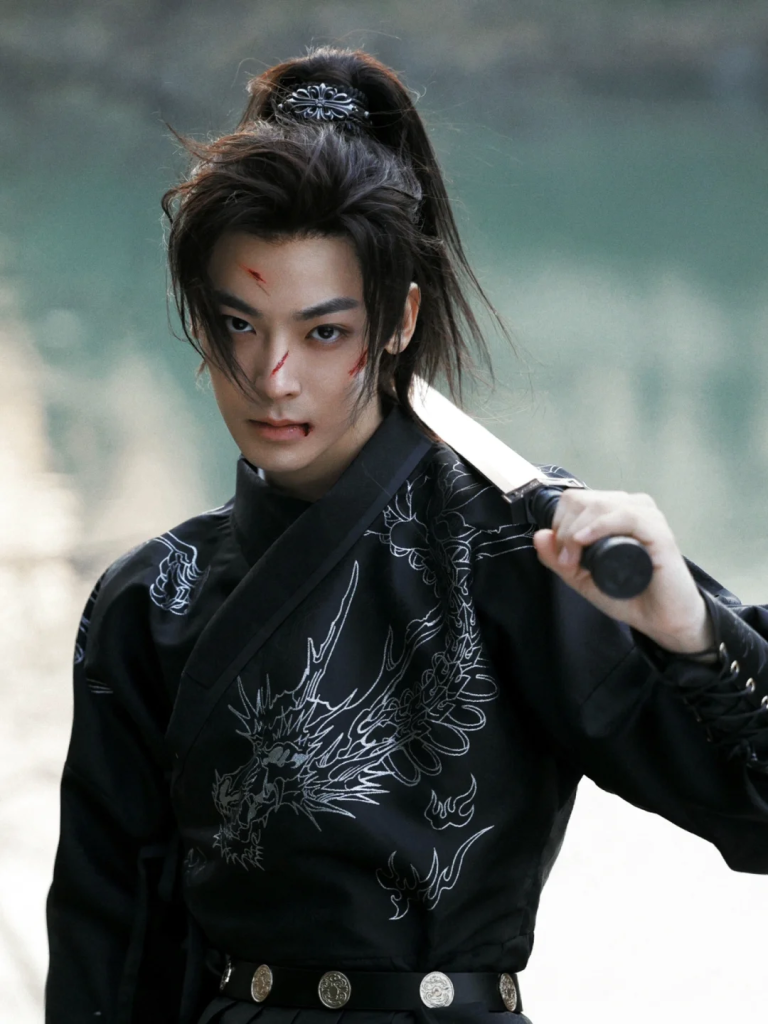
With the increasing development of technology, firearms have changed the mode of combat. The once – heroic knights – errant, who thought “the world’s affairs start from our generation,” not only had to face the mockery of time, as “once in the martial world, time rushes by,” but also had to deal with the bombardment of “foreign guns and cannons.” In the end, perhaps only someone who deeply understands that “in martial arts, only speed can’t be defeated,” could catch a bullet. Now, all that’s left is the sigh of “the precious sword has not been tested for ten years, and it roars like a dragon in the sheath every night.”
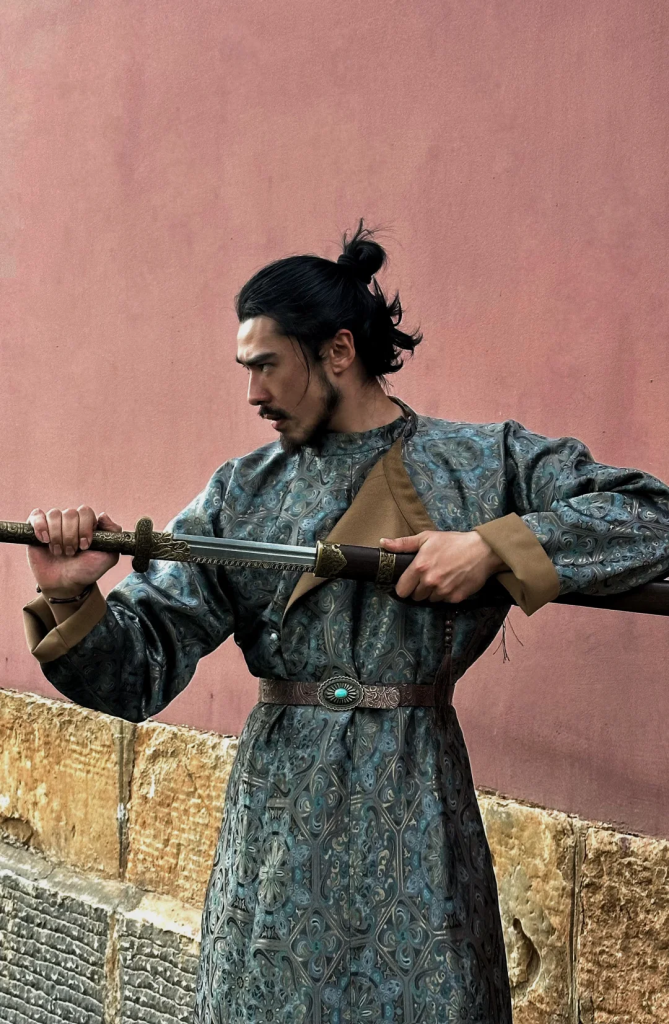
In modern daily life, where public security is stable, one can’t carry swords or knives at will. It’s important to know that carrying controlled knives into public places can lead to light cases of receiving public security penalties, and in severe cases, criminal liability will be pursued in accordance with the law. Therefore, we’d like to respectfully remind all those young, middle – aged, and elder enthusiasts who still have a “knight – errant dream.” In contemporary society, you can follow the chivalrous and noble spirit of the ancients, but carrying swords or knives when going out is absolutely not advisable and far from cool.
But if you’re just looking to take some photos, then put on a stylish and dashing Hanfu outfit, grab the sword (hasn’t been sharpened) you’ve carefully selected, and shoot a set of photos that make you look like a heroic swordsman!



0 Comments